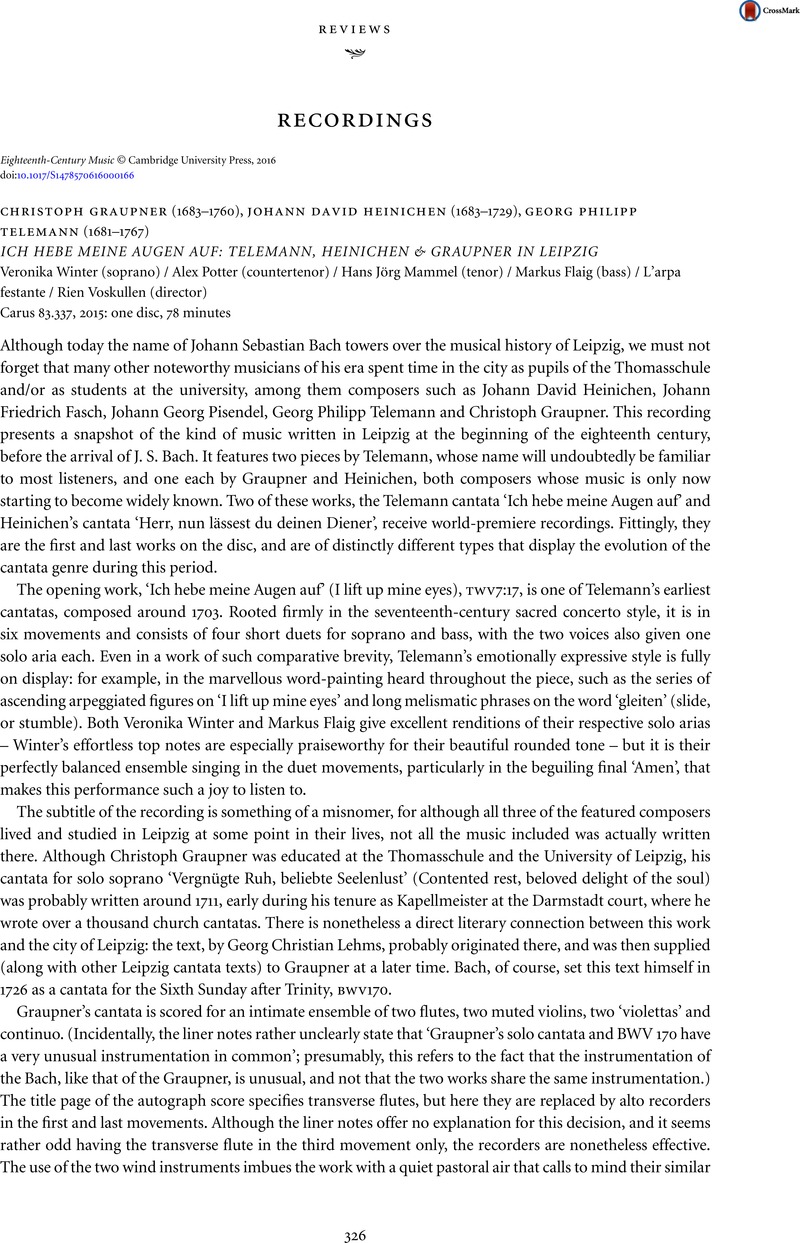No CrossRef data available.
Article contents
CHRISTOPH GRAUPNER (1683–1760), JOHANN DAVID HEINICHEN (1683–1729), GEORG PHILIPP TELEMANN (1681–1767) ICH HEBE MEINE AUGEN AUF: TELEMANN, HEINICHEN & GRAUPNER IN LEIPZIG Veronika Winter (soprano) / Alex Potter (countertenor) / Hans Jörg Mammel (tenor) / Markus Flaig (bass) / L'arpa festante / Rien Voskullen (director) Carus 83.337, 2015: one disc, 78 minutes
Published online by Cambridge University Press: 16 August 2016
Abstract
An abstract is not available for this content so a preview has been provided. Please use the Get access link above for information on how to access this content.

- Type
- Reviews: Recordings
- Information
- Copyright
- Copyright © Cambridge University Press, 2016




